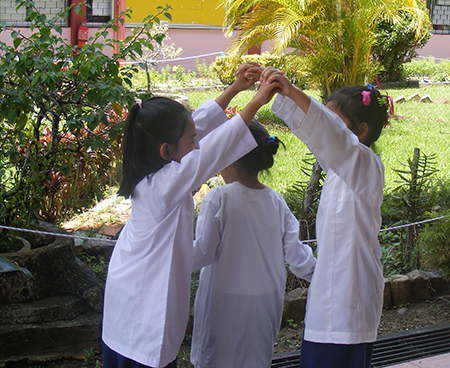Racism and bigotry can begin in childhood. Through her research, psychology Professor Jennifer Steele seeks to understand how this happens. She’s interested in implicit racial biases – “implicit” referring to attitudes that can be activated without conscious awareness or intent – in childhood. She is also interested in the malleability of children’s biases.
In collaboration with the University of Bristol (U.K.), Steele led a comprehensive, two-part study in two countries that investigated children’s attitudes towards Black and white racial out-groups. (An “in-group” is a group to which a person belongs; an “out-group” is a group to which a person does not belong.)

Children develop unconscious racial bias early in life, and this can stay with them beyond childhood. Study 2 participants from Southeast Asia shown here

Jennifer Steele
The team of researchers found that non-Black minority children from Canada as well as non-white majority and non-Black minority children from the small Southeast Asian country of Brunei Darussalam show a pro-white preference in early childhood. (But the bias differed by age group tested.)
“Previous research with white children in North America found that both children and adults showed an ‘unconscious bias’ favouring white over Black racial groups. However, with these new participants, we found, for the very first time, differences in racial bias across age groups,” says Steele. “This suggests that racial bias might not be as fixed from early childhood as some researchers first thought. It might not be bias that stays the same, it might be the cultural messages that we receive. If those messages change, biases can change as well,” she adds.
This new research was funded by the Social Sciences & Humanities Research Council of Canada and the Canadian Foundation for Innovation. The findings were published in Developmental Science (2018).
Read full article on yFile
